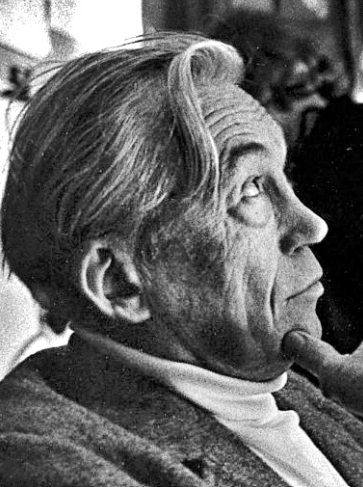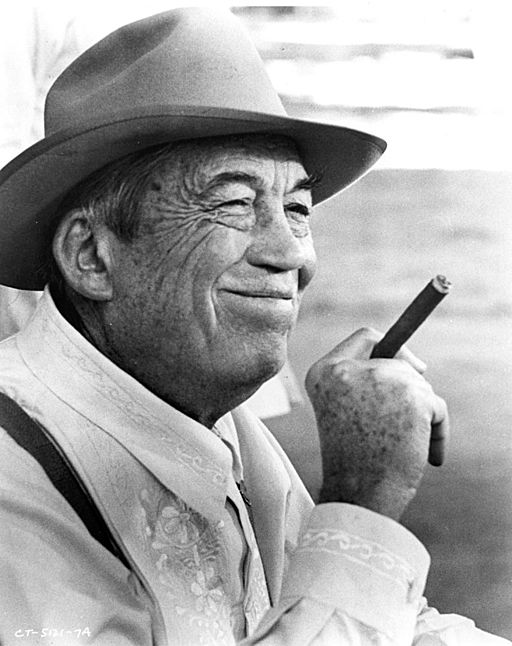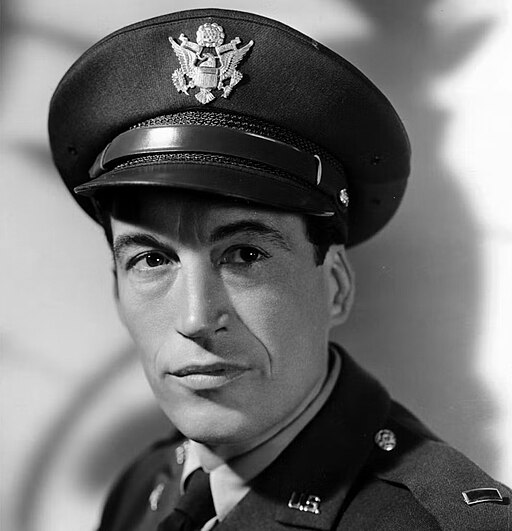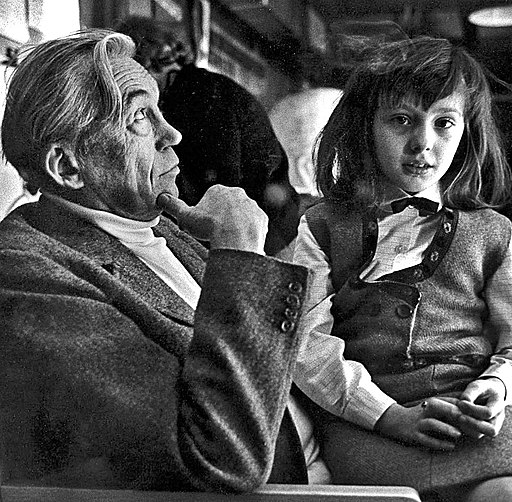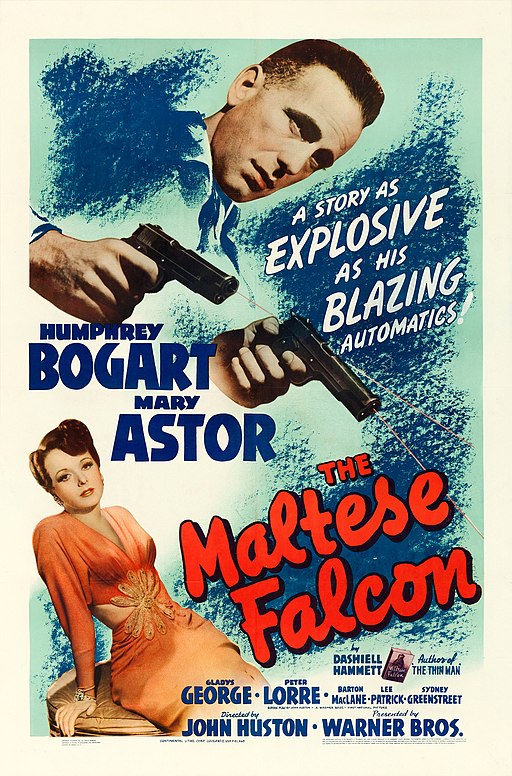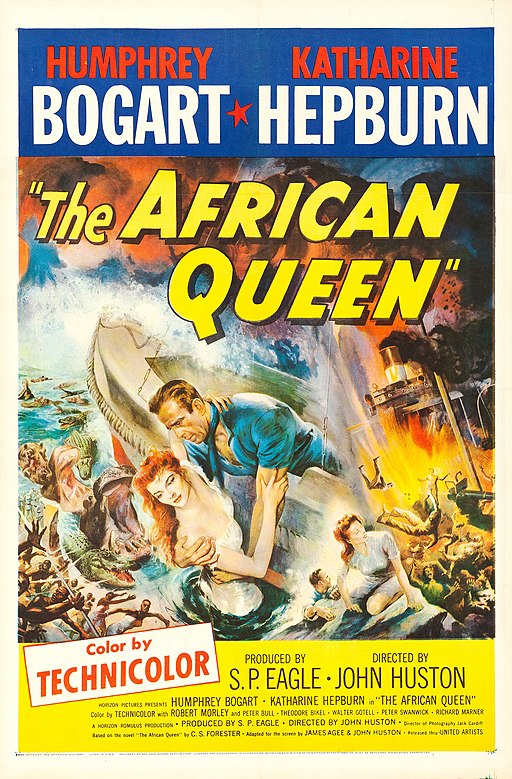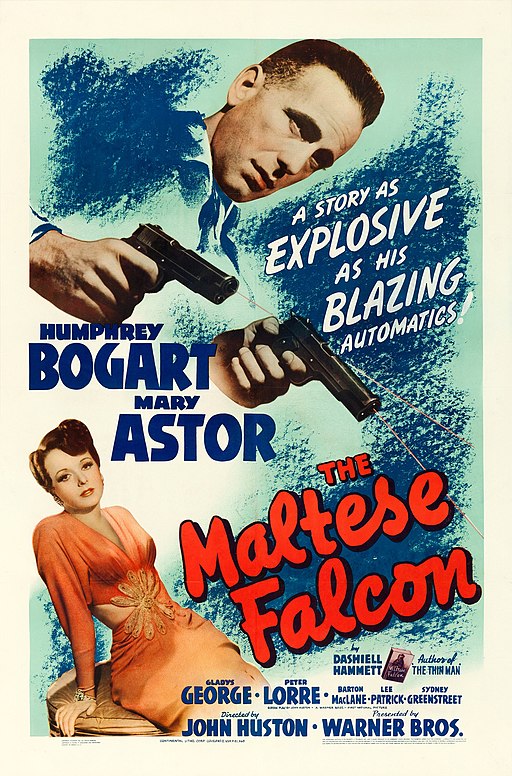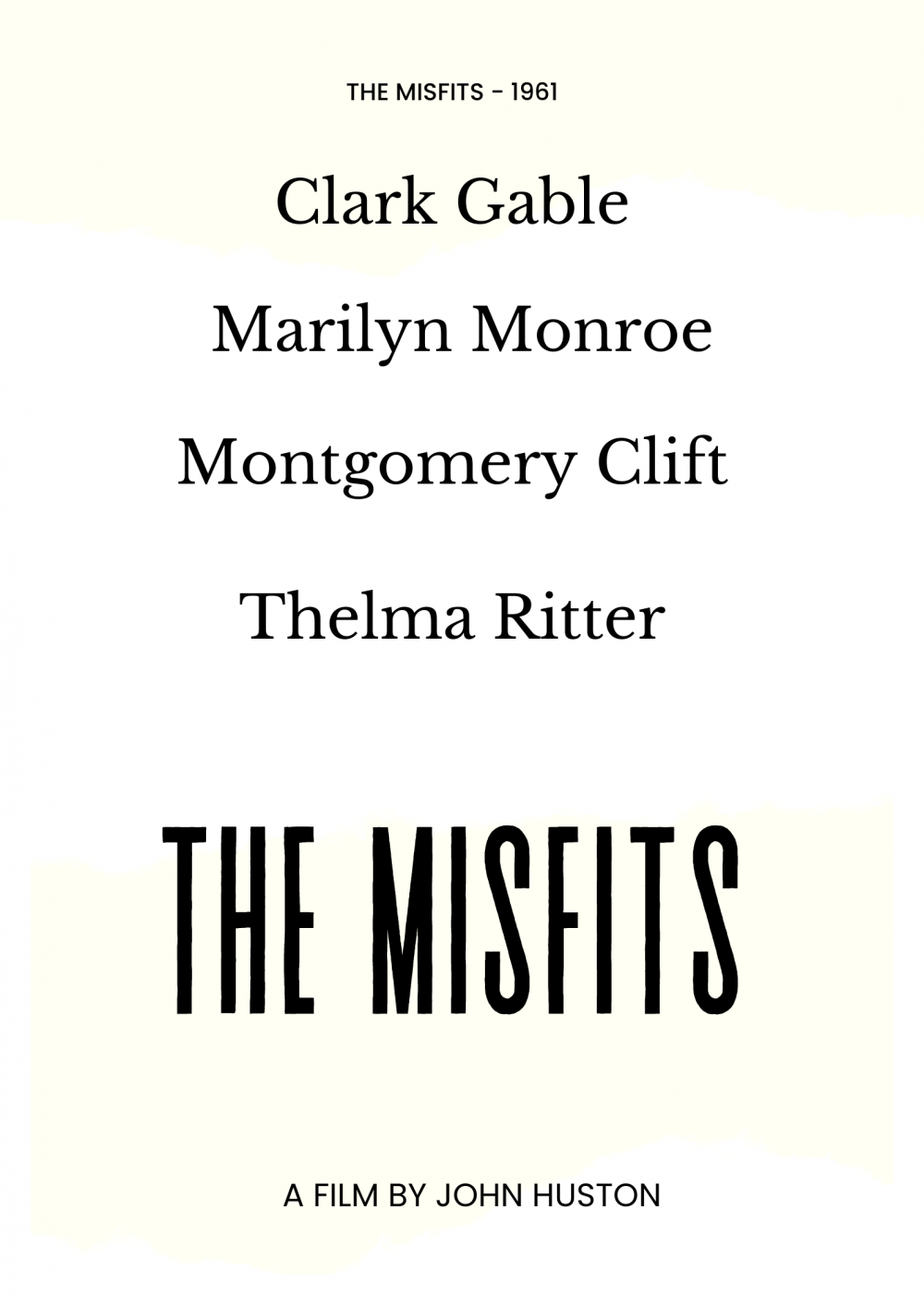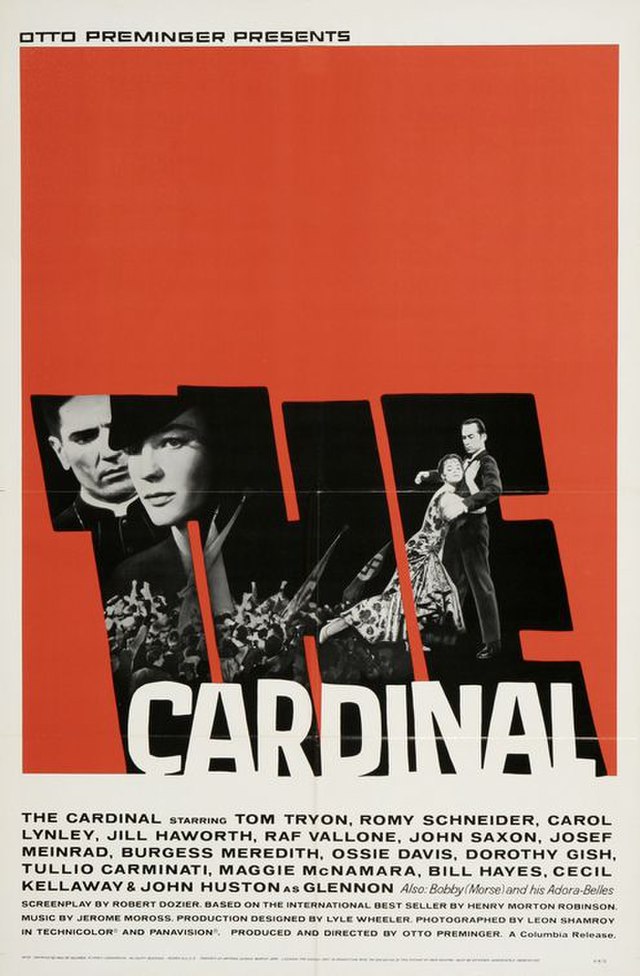John Huston
back| Full Name | John Marcellus Huston |
| Born | August 5, 1906 |
| Birthplace | Nevada, Missouri, United States |
| Died | August 28, 1987 |
| Buried | Hollywood Forever Cemetery, Los Angeles, California, United States |
| Married to | Dorothy Harvey (1925–1926) - Lesley Black (1937–1945) - Evelyn Keyes (1946–1950) - Ricki Soma (1950–1969) - Celeste Shane (1972–1975) |
| Children | Pablo Huston - Tony Huston - Anjelica Huston - Allegra Huston - Danny Huston |
| Notable films | The Maltese Falcon (1941) - The Treasure of the Sierra Madre (1948) - Key Largo (1948) - The African Queen (1951) - Moulin Rouge (1952) - Moby Dick (1956) - The Misfits (1961) - The Man Who Would Be King (1975) - Prizzi's Honor (1985) |
John Huston
The Cinematic Storyteller
Renowned for his influential storytelling and distinctive style, Huston's career spanned nearly five decades. He made an indelible mark on cinema with his directorial debut, "The Maltese Falcon" (1941), establishing himself as a master of film noir.
His repertoire includes classics like "The Treasure of the Sierra Madre" (1948), for which he won two Oscars, and "The African Queen" (1951). Huston was known for his adept adaptations of literary works and his ability to elicit powerful performances from actors.
Related
John Huston
Biography and Overview of his Career
John Marcellus Huston was born on August 5, 1906, in Nevada, Missouri. The son of Rhea Gore, a sports editor and journalist, and Walter Huston, an actor, John was exposed to a creative environment from an early age. This mix of journalism and performance art deeply influenced his later career in film. Huston's childhood was somewhat nomadic, with the family moving frequently across the United States due to his father's acting career.
Early Career
Huston's own career began in the arts, but not initially in film. He explored several paths, including painting and writing, before moving into the film industry. He started as a scriptwriter in the 1930s, showing a knack for dialogue and storytelling. His first major success as a screenwriter was with the film "Jezebel" (1938), starring Bette Davis.
Directorial Debut and Rise to Fame
Huston made his directorial debut with "The Maltese Falcon" (1941), a film noir starring Humphrey Bogart. This film was a resounding success and established Huston as a significant figure in Hollywood. His ability to create a dark, atmospheric mood and direct actors to give nuanced performances was particularly noted.
Personal Life
Huston's personal life was as eventful as his career. He was known for his charismatic personality and adventurous spirit. Married five times, his relationships were often as dramatic as the movies he directed. His marriages included notable names such as actress Evelyn Keyes and ballerina Enrica Soma. Huston had five children, several of whom followed in his footsteps in the film industry, most notably Anjelica Huston and Danny Huston.
Notable Works and Achievements
Throughout his career, Huston directed and wrote many films that are now considered classics. He won Oscars for Best Director and Best Adapted Screenplay for "The Treasure of the Sierra Madre" (1948), a film which also featured his father, Walter Huston. Other significant works include "Key Largo" (1948), "The African Queen" (1951), "Moulin Rouge" (1952), and "The Man Who Would Be King" (1975). His last notable work was "Prizzi's Honor" (1985), a dark comedy that brought an Academy Award to his daughter, Anjelica Huston.
Later Years and Death
In his later years, Huston's health declined, partly due to a lifetime of heavy smoking. Nevertheless, he continued to direct and write for films. He passed away on August 28, 1987, in Middletown, Rhode Island, from emphysema. His body was buried in the Hollywood Forever Cemetery in Los Angeles, a fitting resting place for a man who had given so much to the world of cinema.
Legacy
John Huston's legacy in cinema is profound. He was known for his storytelling prowess, his ability to bring out the best in actors, and his fearless approach to filmmaking. His works influenced generations of filmmakers and continue to be celebrated for their artistic merit and innovation in the field of cinema.
John Huston receives Oscar for Best Director in 1949:
Analysis of the Directing Style of John Huston:
John Huston's directorial style is notable for its versatility, narrative strength, and character-driven focus. His approach to filmmaking can be analyzed through several key aspects:
Adaptation and Storytelling
Huston had a remarkable talent for adapting complex novels and plays into films. His adaptations, such as "The Maltese Falcon," "The Treasure of the Sierra Madre," and "Moby Dick," remained faithful to the source material while translating them effectively for the screen. He had a knack for distilling the essence of the original works and presenting them in a visually compelling and narratively coherent manner.
Realism and Authenticity
Many of Huston's films are characterized by a sense of realism. He often shot on location and sought authenticity in the settings and backgrounds of his stories. This commitment to realism can be seen in films like "The African Queen," shot in the Congo and Uganda, and "The Man Who Would Be King," filmed in Morocco. His attention to detail in creating realistic environments added depth and believability to his narratives.
Character Development
Huston was known for his deep and complex characterizations. He had a gift for exploring the human condition and often delved into the psychology of his characters. His films frequently featured flawed, morally ambiguous, or anti-heroic characters, portrayed with depth and nuance. This is evident in "The Misfits" and "Fat City," where the characters' internal struggles and conflicts are central to the story.
Cinematic Techniques
Huston's films are marked by their straightforward and unpretentious style. He favored a classical approach to filmmaking, with clear, precise storytelling. His use of cinematography was purposeful – he employed it to enhance the narrative rather than overshadow it. His framing and composition were meticulous, often using wide shots to establish a sense of place and close-ups for emotional impact.
Collaboration with Actors
Huston was renowned for his ability to draw out exceptional performances from his actors. He often worked with the same actors across different films, such as Humphrey Bogart, and had a talent for casting perfectly suited to the roles. His directorial approach was actor-friendly, giving them space to explore their characters while guiding them subtly towards the envisioned performance.
Thematic Exploration
Huston's films frequently explored themes of human frailty, existential struggle, and moral ambiguity. He was not afraid to tackle complex and often dark themes, examining the human psyche in various contexts, from the greed-driven adventures in "The Treasure of the Sierra Madre" to the existential crises in "Under the Volcano."
Legacy
John Huston's influence on cinema is profound. He paved the way for future filmmakers in terms of adapting literary works, creating complex characters, and exploring challenging themes. His films remain relevant for their humanistic approach and storytelling excellence, marking him as one of the great auteurs in film history.
John Huston Spouses:
-
Dorothy Harvey (1925–1926): His first marriage was to Dorothy Harvey. This union was brief, and there's limited information available about their time together.
- Lesley Black (1937–1945): Huston's second wife was Lesley Black, a society figure. Their marriage lasted about eight years. The relationship, like many of Huston's personal entanglements, was marked by the strains of his burgeoning film career and his larger-than-life personality.
- Evelyn Keyes (1946–1950): Evelyn Keyes, an actress known for her role in "Gone with the Wind," was Huston's third wife. Their marriage was part of his most prolific period in Hollywood, but it ended after four years.
- Enrica Soma (1950–1969): Enrica Soma, a ballerina and former model, was Huston's fourth wife and the mother of two of his children, including actress Anjelica Huston. Their marriage lasted nearly two decades, though it was tumultuous and marked by long separations and Huston's infidelities. Soma died in a car accident in 1969.
- Celeste Shane (1972–1975): His fifth and final marriage was to Celeste Shane, a much younger woman. The relationship, marked by a significant age difference, ended in divorce after a few years.
Memorable Quotes from John Huston:
On Filmmaking and Art:
- "I prefer to think that God is not dead, just drunk."
- "The directing of a picture involves coming out of your individual loneliness and taking a controlling part in putting together a small world. A picture is made. You put a frame around it and move on. And one day you die. That's all there is to it."
On Life and Experience:
- "You walk through a series of arches, so to speak, and then, presently, at the end of a corridor, a door opens and you see backward through time, and you feel the flow of time, and realize you are only part of a great nameless procession."
- "There is a willow grows aslant a brook, That shows his hoar leaves in the glassy stream. There with fantastic garlands did she come..."
On Success and Failure:
- "Failure and its accompanying misery is for the artist his most vital source of creative energy."
- "I don't try to guess what a million people will like. It's hard enough to know what I like."
On Characters and Stories:
- "I'm not good at life, but I've been wonderful at fragments of it."
- "The only point in making money is, you can tell some big shot where to go."
Reflective and Philosophical:
- "The problem with the world is that everyone is a few drinks behind."
- "We are all just passing time and occupy our chair very briefly."
Awards and Recognition:
Academy Awards (Oscars)
- 1942: Won Best Director for "The Maltese Falcon" (nominated)
- 1949: Won Best Director and Best Adapted Screenplay for "The Treasure of the Sierra Madre" (also nominated for Best Picture)
- 1952: Nominated for Best Director for "The African Queen"
- 1959: Nominated for Best Director and Best Adapted Screenplay for "The Roots of Heaven"
- 1964: Nominated for Best Director and Best Adapted Screenplay for "The Cardinal"
- 1986: Nominated for Best Director for "Prizzi's Honor"
Golden Globe Awards
- 1952: Nominated for Best Director for "The African Queen"
- 1964: Nominated for Best Director for "The Cardinal"
- 1986: Won Best Director for "Prizzi's Honor"
BAFTA Awards
- 1953: Nominated for Best Film from any Source for "Moulin Rouge"
- 1958: Nominated for Best Film from any Source for "Moby Dick"
- 1985: Nominated for Best Adapted Screenplay for "Under the Volcano"
Directors Guild of America (DGA)
- 1964: Nominated for Outstanding Directorial Achievement in Motion Pictures for "The Night of the Iguana"
- 1986: Nominated for Outstanding Directorial Achievement in Motion Pictures for "Prizzi's Honor"
Other Honors
- Huston received several career and lifetime achievement awards, recognizing his contributions to the film industry.
- He was honored at international film festivals and by film societies for his body of work.
- Huston's films also received numerous nominations and awards in various categories, reflecting the overall quality of his projects.
Movies Directed by John Huston:
1940s
- The Maltese Falcon (1941): A private detective deals with a group of criminals who are searching for a valuable statuette.
- In This Our Life (1942): A drama about the conflicts in the lives of a Virginia family.
- Across the Pacific (1942): An espionage thriller set during World War II, involving a plan to attack the Panama Canal.
- Report from the Aleutians (1943): A documentary about the life of American soldiers stationed in the Aleutian Islands during World War II.
- The Battle of San Pietro (1945): A documentary showing the harsh realities of the battle between the U.S. Army and German forces in Italy.
- Let There Be Light (1946): A documentary focusing on the treatment of psychologically traumatized war veterans.
- The Treasure of the Sierra Madre (1948): Two Americans and an old prospector search for gold in the mountains of Mexico, facing challenges both external and internal.
- Key Largo (1948): A man visits his late friend's family at a hotel, only to find it taken over by gangsters.
1950s
- We Were Strangers (1949): A drama about a group of Cuban revolutionaries plotting to overthrow their government.
- The Asphalt Jungle (1950): A meticulously planned robbery spirals into disaster in this crime film.
- The Red Badge of Courage (1951): The story of a young soldier's experiences in the American Civil War.
- The African Queen (1951): In WWI Africa, a gin-swilling riverboat captain is persuaded by a strait-laced missionary to use his boat to attack an enemy warship.
- Moulin Rouge (1952): A biographical film about the artist Henri de Toulouse-Lautrec in the bohemian world of the Parisian dance halls in the late 19th century.
- Beat the Devil (1953): A group of international adventurers plot to get their hands on uranium deposits in Africa.
- Moby Dick (1956): The adaptation of Herman Melville's novel, about Captain Ahab's obsessive quest to kill the white whale.
- Heaven Knows, Mr. Allison (1957): During World War II, a marine and a nun form an unlikely friendship.
- The Barbarian and the Geisha (1958): The story of Townsend Harris, who in 1856 was appointed the first American Consul to Japan.
- The Roots of Heaven (1958): In French Equatorial Africa, an idealist fights to save elephants from extinction.
1960s
- The Unforgiven (1960): Drama and tension build as a frontier family contends with Indian neighbors.
- The Misfits (1961): A divorcee falls for an over-the-hill cowboy who is struggling to maintain his romantically independent lifestyle.
- Freud: The Secret Passion (1962): A film about the early life of the psychoanalyst Sigmund Freud.
- The List of Adrian Messenger (1963): A mystery involving a series of seemingly unrelated deaths connected by a cryptic message.
- The Night of the Iguana (1964): A defrocked Episcopal clergyman leads a bus-load of middle-aged Baptist women on a tour of the Mexican coast and comes to terms with the failure haunting his life.
- The Bible: In the Beginning... (1966): An epic film retelling parts of the Bible, from Genesis to the story of Noah's Ark.
- Reflections in a Golden Eye (1967): A drama set on a Southern army base in the 1940s, dealing with issues of sexual repression, jealousy, and latent homosexuality.
- Sinful Davey (1969): A young man dreams of becoming a notorious criminal.
- A Walk with Love and Death (1969): A romance set against the backdrop of the Hundred Years' War.
1970s
- The Kremlin Letter (1970): A cold war thriller involving a US spy network operating in the Soviet Union.
- Fat City (1972): The story of two boxers, one who is at the end of his career and the other who is just beginning.
- The Life and Times of Judge Roy Bean (1972): A whimsical western about a self-appointed judge who cleans up a Texas town.
- The Mackintosh Man (1973): A British agent is sent to infiltrate the organization of a master criminal.
- The Man Who Would Be King (1975): Based on Rudyard Kipling's story, two British adventurers become kings of a remote part of Afghanistan.
- Wise Blood (1979): A drama about a young, eccentric war veteran who tries to found a religion in a small town.
1980s
- Phobia (1980): A psychiatrist treats patients with a fear of open spaces.
- Victory (1981): During World War II, Allied POWs plan an escape by playing a football match against the German National Team.
- Annie (1982): The adaptation of the Broadway musical about a young orphan who ends up living with a wealthy industrialist.
- Under the Volcano (1984): The last 24 hours in the life of a self-destructive British consul in Mexico on the eve of World War II.
- Prizzi's Honor (1985): A professional hitman and hitwoman fall in love, only to discover that they have each been hired to kill the other.
- The Dead (1987): An adaptation of James Joyce's short story about a New Year's Eve gathering in Dublin in the early 20th century.

